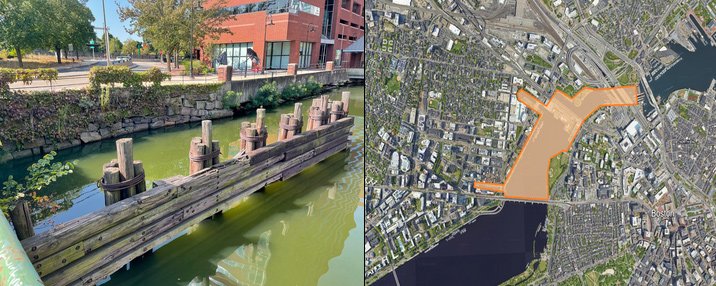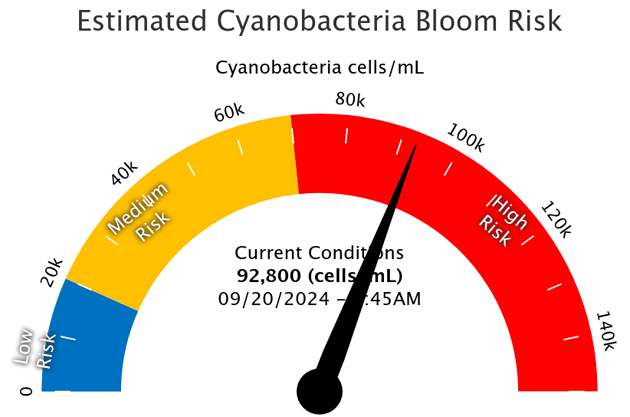
The Charles in bloom and map of the affected area, by CRWA.
The state Department of Public Health yesterday confirmed that the Charles River from the Longfellow to the dam is now full of blue-green algae, which means you need to be especially careful to keep your dogs and young children out of it, the Charles River Watershed Association reports.
Cyanobacteria, or blue-green algae, are naturally occurring microorganisms in rivers, lakes and ponds that can potentially release harmful cyanotoxins, exposure to which can be fatal to pets and young children. Direct contact with cyanobacteria-contaminated water can cause skin rashes, and inhaling airborne toxins can affect respiratory systems, especially for those with pre-existing conditions like asthma.
Due to these severe health risks, DPH has deemed the area unsafe for people and pets and has advised the public not to swim or swallow water in the area, to keep their pets away and to rinse off after having contact with the water.
It's the first such bloom in that stretch of the river in four years, the association says, and is based on data from an EPA buoy near the Museum of Science that tracks various river conditions, including substances that can indicate the presence of blue-green algae:

The association sued the EPA in federal court in 2022 to try to get it to make cities and towns along the Charles better filter stormwater runoff to reduce the amount of phosphorus - which promotes the growth of the microorganism in the Charles. The case is still pending.
Like the job UHub is doing? Consider a contribution. Thanks!
Ad:
Comments
And, yes, that includes Bill Weld
By adamg
Fri, 09/20/2024 - 11:33am
Bill will take a shot at it
By anon
Fri, 09/20/2024 - 1:03pm
after having a few shots. At least Bill had a sense of humor. He always said, "I'd rather have a bottle in front of me than a frontal lobotomy".
Nice job polluters and
By anon
Fri, 09/20/2024 - 3:20pm
Nice job polluters and importers of invasive species. Collectively across the Globe, you have ruined the planet.
Not invasive
By SwirlyGrrl
Sun, 09/22/2024 - 8:46am
This is our own home brew of cyanobacteria.
What humans have done is dumped a lot of yummy nutrients on lawns that run off into our waterways - that plus more heat as the climate changes means areas of low flow "go green".
Cape Cod has the additional nutrient load from septic systems that aren't keeping up. It all has to go somewhere.
If there's this large of a problem in the river currently...
By Kaz
Fri, 09/20/2024 - 3:40pm
Maybe it's time to rollback the changes to before it got this bad.
(That's a blue-green operations deployment nerd joke, in case you missed it)
An Anecdote...
By Don't Panic
Tue, 09/24/2024 - 12:56am
I walked across a lake that color to an island in the middle when I was 8 years old or so. My older cousin had a key hole life jacket he used me to test. The water cleared up the closer I got to the island. No injuries or illnesses were suffered.